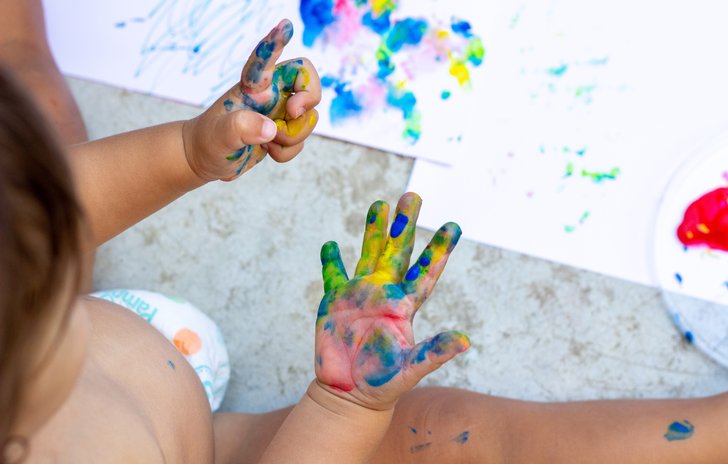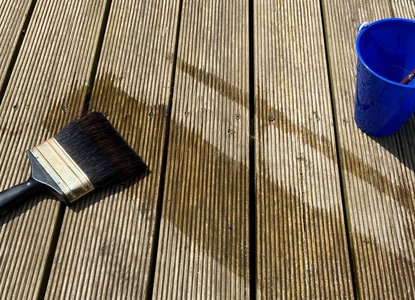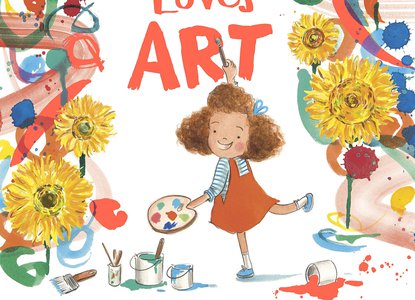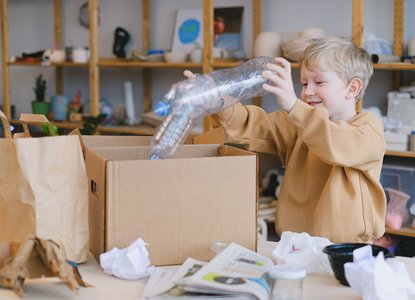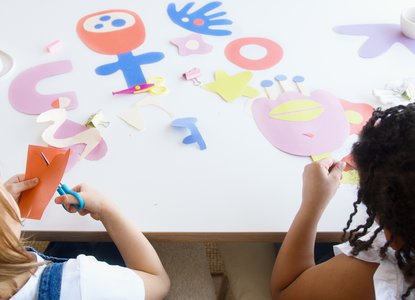Painting activities will support your child’s creativity, imagination, thinking skills, hand control and coordination, and it will get them chatting too!
Painting at home can be a daunting prospect, especially if you have limited space, but it is possible to make it manageable and not too expensive. Select the type of painting you offer and carefully prepare the space to reduce the risk of mess!
There’s no need to buy expensive paint sets, a basic selection of colours, a few brushes and some recycled jars or old plastic pots, and a little imagination is all you need.
Types of paint you could try:
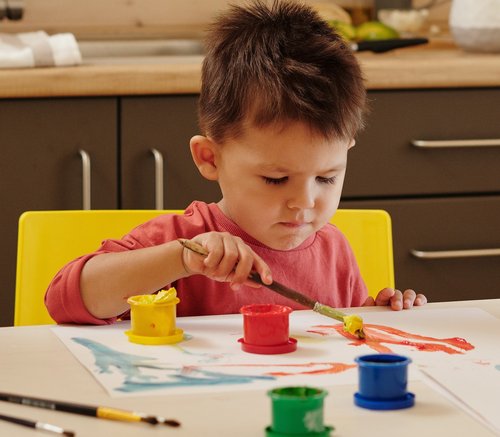
Poster paints
These can be used with a brush or other tools, such as sponges or potatoes for printing, or as finger paints. To reduce mess and waste use a plastic plate or piece of cardboard as a palette and offer small quantities of paint at a time, topping up as needed. Alternatively, use small, lidded pots or jars. Once they’ve finished painting the lids can go on to save the paint until next time.
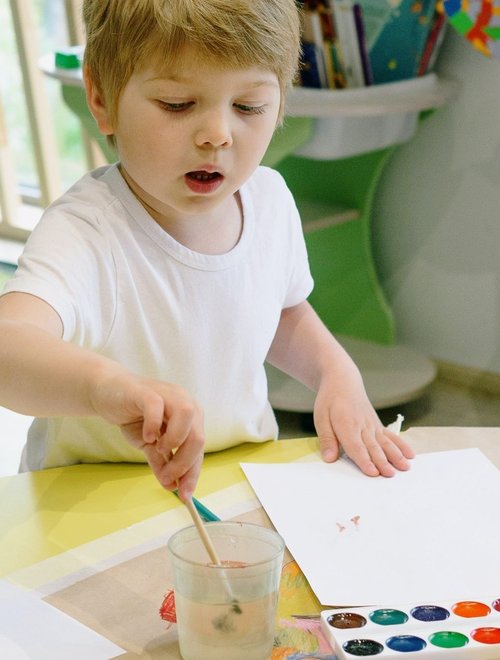
Watercolour paints
Suitable from two-three years. Children will need to be taught how to use these. Once they’ve learnt the process of washing and wiping the drips from their brush before they collect paint with it, they should be able to use these paints with limited mess. Gently rinse them under the tap when they're finished and let them dry ready to use again.
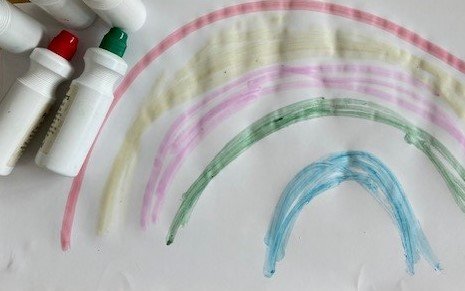
Paint dabbers (like bingo dabbers)
These aren’t quite the same as paint, but they are easy for little hands to use, they make large satisfying marks, and will support the development of gross motor skills.
Tips and tricks to reduce painting mess and costs:
Get Prepared:
- Protect surfaces with a plastic tablecloth. Or, cut open a bin bag, unfold a large cardboard box, or use newspaper (secure with masking tape).
- If you have an outdoor space, paint outside when the weather allows.
- Use a piece of cardboard as a paint palette or yogurt pots for paint pots, throw them away or recycle them afterwards.
- Prepare a space for wet paintings to dry.
- Have a washing up bowl ready to drop in used paintbrushes and pots, to make tidying easier.
- Have a damp cloth ready to wipe up spills and clean up hands.
- Ensure the paints you use are child safe and washable. Wear old clothes or use a large shirt/t-shirt as an apron!
- Choose thick paper if you can. Thin paper can get soggy and torn. Or save cardboard from the recycling (cut flat pieces or decorate boxes).
Painting together:
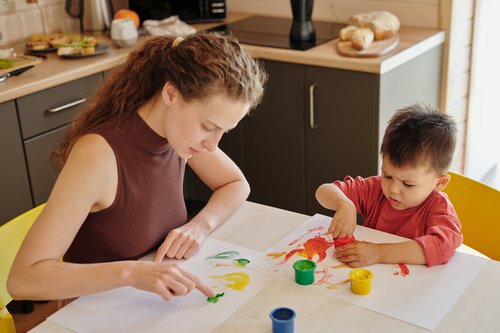
- Go large! Young children may find it difficult to keep the paint on a small piece of paper, giving them large paper can help reduce mess!
- Sitting alongside your child and chatting with them as they paint will keep them focussed and show them you’re interested in what they’re doing.
- Talk about the marks they make and the colours they mix, and encourage them to talk about what they’re doing too.
- Follow your child's lead, they may not be ready to paint a picture yet, let them explore and experiment with the feel and colours of the paint.
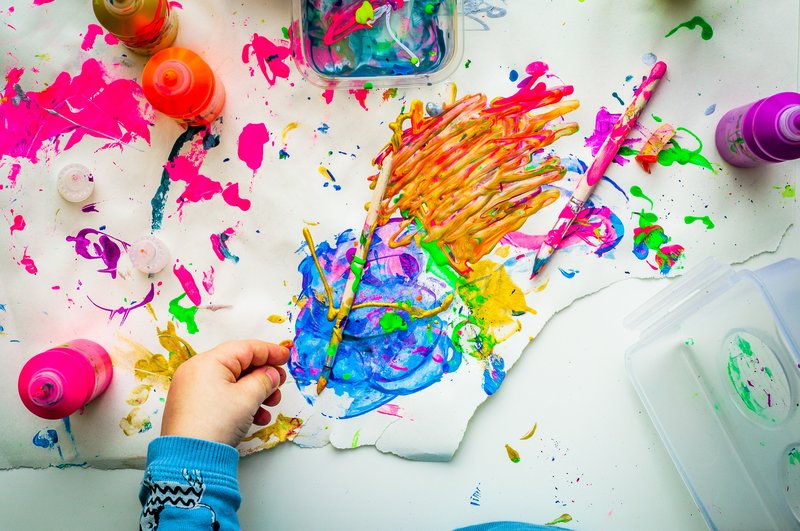
Tidying up:
- Your child may spend all afternoon, or just a few minutes painting, but the more chances they have to try it, the more their skills and interests will develop.
- Let your child help tidy up, they’ll enjoy it, and they’ll be learning about taking responsibility. Plus, while they’re busy washing the brushes it will be easier for you to wipe any drips and spills before they’re on the move again!
- If you take care of the paints and brushes they should last for years.
Top Tips!
Focus on the process, not the finished product. Children need lots of practice to develop their skills as they explore and experiment with paint. Show them how proud you are of their ideas and creations and one day they will produce the masterpiece you’re hoping for!
If you’re well organised in advance it’s more likely to be a calm and positive experience for both of you!
Did you know?
The chats you have while they paint will support their thinking skills, creativity and vocabulary.
